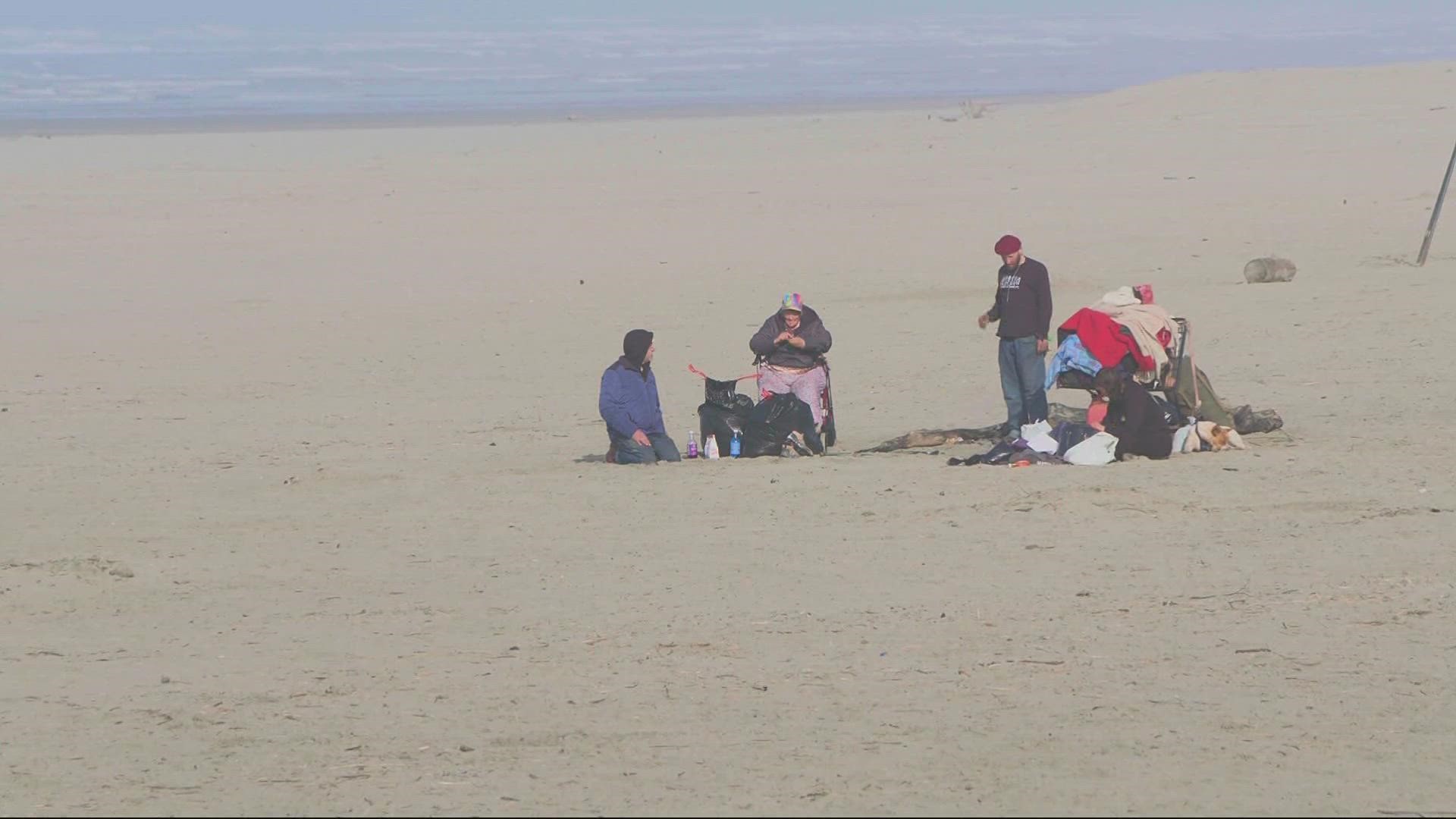SEASIDE, Ore. — Looking out over the Oregon Coast at Seaside, it's clear why people like to visit. But because of a severe lack of affordable housing, few can actually live there.
“Even for the people who want to get jobs here, we don't have enough homes,” said Seaside City Councilor Tita Montero.
Seaside depends on tourism to keep its economy afloat. At the same time, like many other Oregon cities, it is also grappling with increasing homelessness in the community — sometimes right out on the beach.
City leaders say it requires a balance to deal with a population that needs help, but also to meet homeowners needs and not hurt the economy.
“It's really looking after people who are houseless but also taking care of residents who have homes here and are often impacted,” said Seaside Mayor Jay Barber.
With the mayor’s support, Montero is leading Seaside's effort to make things better, after city leaders made homelessness a priority in 2021.
“We started off with, what are the needs of all these different groups of people?" Montero said. "What are the needs of city workers, what are the needs of the people who own houses here? What are the needs of the people who are homeless?”
Since last May, city leaders have held a half-dozen community forums. After that, Montero formed a “think tank” made up of a variety of community members, officials and professionals. It helped the city form seven key strategies, ranging from creating a homeless warming shelter to adding liaisons to building transitional and permanent affordable housing.
Some strategies are already working.
“I think what happens in a larger city is the bureaucracy is so big. It's difficult to have those kind of ground-level [efforts], kind of ‘How can we solve this together?’" said Barber. "That's really what we're working toward."
In some ways, homelessness looks different at the coast than in Portland. There are more small camps on the outskirts of Seaside, with many hidden in the woods or at the ends of otherwise of quiet streets. But numbers paint a different picture.
“Clatsop County has the highest number of homeless individuals per capita in rural Oregon. So, we do have an issue,” said Viviana Matthews, Executive Director of Clatsop Community Action. The non-profit organization spends most of its time helping keep people from becoming homeless.
The most recent point-in-time homeless count in 2019 found Clatsop County had 894 homeless people living there, a rate of 22.7 per 1,000 people.
The Helping Hands warming shelter, which opened in January, is part of the strategy to help the unsheltered. Next, the plan is to have the same space become a navigation and resource center in the non-winter months.
Cheryl Paul is one of CCA’s two new homeless liaisons who make connections on the homeless community.
“Sometimes it's just a little as a pair of socks, but ultimately getting to know them taking care of small needs, with the goal in mind to work towards finding housing, and then the steps it takes to get to housing,” said Paul.
Not all homelessness is hidden in the woods. Just north of downtown Seaside there is a lot full of car and RV camping. And to the frustration of nearby residents, it's been going on for a while.
It was about a year-and-a-half ago, Montero said, that homeless people in old RV's started parking and camping long-term along the river on Necanicum Drive. That was not allowed, and signs went up — then some of the campers ended up moving into a city-owned lot across the street.
City leaders know it cannot last forever, but one of the challenges for this small city is finding a place for a sanctioned and managed car park camp somewhere else.
“We have so little land that we need to be working with private landowners. e're in some discussions with some private landowners hoping to get some land to be used for managed carparks,” said Montero.
In the meantime, Seaside's police chief has added "homeless liaison" to the duties of the community service officer, and the city is reworking its camping ordinance. The goal is to give police more defined rules for moving people on, while offering alternatives for where to go.
Police Chief David Ham said that's an important start, given changes imposed at the state and federal level.
“The problem for Seaside — and some of our residents in the community who are complaining about this — is the fact that that we haven't really had any concrete policy and ordinances that are in effect that we feel that we can act on," said Ham.
There are certainly differences from small cities to large. Seaside’s volunteer city hall leadership is finding that out, as it finds its way through its homeless crisis.
“The wheels of government move slowly and we're never going to be fast enough for a lot of people,” said Montero.
“We're trying to solve this with the kinds of resources and time that we have, but it is a challenge. We are not going to solve it, but we will be able to help make things better," said Barber. "That's our plan."

